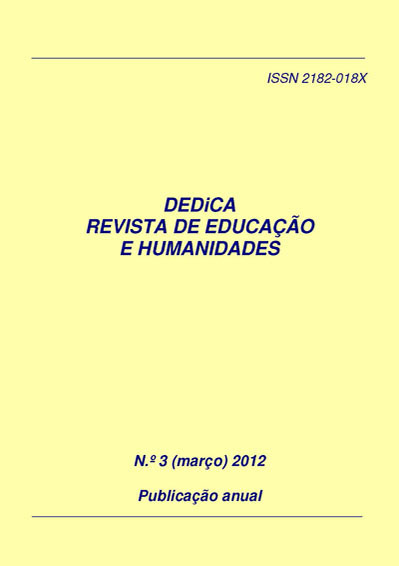Interculturalidad e integración social en el aula a través del flamenco y los medios audiovisuales. Orientaciones y propuestas didácticas
DOI:
https://doi.org/10.30827/dreh.v0i3.7101Palabras clave:
flamenco, medios audiovisuales, didáctica, educación, interculturalidadResumen
La integración y armonía de todos los elementos que componen el hecho educativo (profesor-alumno-aula) se hace necesaria para que el proceso de enseñanza-aprendizaje se lleve a cabo con la mayor probabilidad de éxito posible. Por ello están surgiendo multitud de recursos y herramientas para la mejora de la convivencia en el aula y la transmisión de valores como el respeto, la tolerancia, el diálogo, etc. Siendo el flamenco una de las manifestaciones folklóricas y socioculturales que ha nacido gracias a las influencias de diferentes pueblos, su presencia en el aula puede resultar un instrumento eficaz y productivo. Los medios audiovisuales y las nuevas tecnologías pueden servirnos de vehículo entre el flamenco y el alumnado, el cual está habituado al uso cotidiano de estos medios.
Con la combinación de ambos recursos (flamenco-medios audiovisuales) se potenciarán competencias educativas básicas recogidas en el currículum como el tratamiento de la información y competencia digital o la competencia social y ciudadana. Esta comunicación ofrecerá diversas orientaciones y propuestas didácticas para trabajar especialmente la integración social en el aula a través del flamenco y los medios audiovisuales, valorando las posibilidades reales que ofrecen y sus aplicaciones docentes.
Descargas
Citas
Area Moreira, M. (2005). Nuevas tecnologías, globalización y migraciones. Barcelona: Octaedro.
Beltrán Llera, J. A; Vega Rivero, M. (2003). Aprender con tecnología en el Aula Inteligente. In F. Segovia Olmo (Coord.), El Aula Inteligente. Nuevas perspectivas, 101-138. Madrid Espasa Calpe.
Cenizo Jiménez, J. (2009). Poética y didáctica del flamenco. Sevilla: Signatura Ediciones.
Escudero Díaz, J. P. (2010). El flamenco en los medios audiovisuales. Aplicaciones didácticas y valores educativos de este nuevo lenguaje. In M. A. Ortiz Molina (Coord.), Arte y Ciencia. Creación y responsabilidad, 119-138. Coimbra: Fernando Ramos (Editor).
Fernández, L. (2004). Teoría musical del flamenco: ritmo, armonía, melodía, forma. Madrid: Acordes Concert.
Ferreiro, R. F. (2006). El reto de la educación del siglo XXI: la generación N. Apertura 5, 6 (2006). Consultado en 1/11/2011. Disponible en http://www.udgvirtual.udg.mx/apertura/num5/pdfs/generacion_n.pdf.
García-Valcárcel, A. (2003). Tecnología educativa, Implicaciones educativas del desarrollo tecnológico. Madrid: La Muralla.
Lara, T (2009). Alfabetizar en la cultura digital. In T. Lara; F. Zayas; N. Alonso Arrukero; E. Larequi, La competencia digital en el área de lengua, 9-38. Barcelona: Octaedro.
López Castro, M (1995). El flamenco y los valores. Una propuesta de trabajo escolar. Málaga: CEP. Consultado en 1/11/2011. Disponible en: https://docs.google.com/viewer?a=v&pid=explorer&chrome=true&srcid=0B94jznXGzQ9mMjM2YjhmMTYtNzU0Yy00NDc1LTkzYzctYmNhMTc0MzMxM2M2&hl=e.
López Castro, M. (Coord.) (2004). Introducción al flamenco en el currículum escolar. Madrid: Akal.
Revista De Investigación Sobre Flamenco, 3 (2010). Consultado en 1/11/2011. Disponible en http://revistas.um.es/flamenco/article/view/114261.
Sarramona, J. (2002). Desafíos a la escuela del siglo XXI. Barcelona: Octaedro.
Taberner Guasp, J. (2003). Sociología y Educación. El sistema educativo en sociedades modernas. Funciones, cambios y conflictos. Madrid: Tecnos.
Uñón Toro, P; Reyes Polo, N; Pérez Cañete, M; Estepa Gutiérrez, M. (2001). El flamenco en el aula. Córdoba: Junta de Andalucía. Consejería de Educación y Ciencia. Disponible en: http://www.actiludis.com/wp-content/uploads/2009/05/el_flamenco_en_el_aula.pdf. Consultado en 1/11/2011.
Utrilla Almagro, J. (2007). El flamenco se aprende. Teoría y didáctica de la enseñanza del flamenco. Córdoba: El Toro Mítico.












